Lafayette Parish has a long and profound history of various cultures, starting with the indigenous Atakapa-Ishak, Choctaw, Chitimacha, and Opelousa peoples. They were some of the first to inhabit the area. About 18,000 Acadian refugees settled in the area after being expelled from Canada in 1755 when Great Britain captured the land from France. The Acadian immigrants married other French, Spanish, and African settlers, forming what became known as Cajun and Creole cultures. Both cultures spoke French and were devoted Catholics.
Lafayette Parish is still at the heart of Louisiana’s Cajun and Creole country, with a living and vibrant history that is evident whether you’re grabbing a bite to eat, visiting a gallery or museum, or dancing to Cajun or zydeco music at a local dancehall.
1755 – Le Grand Derangement
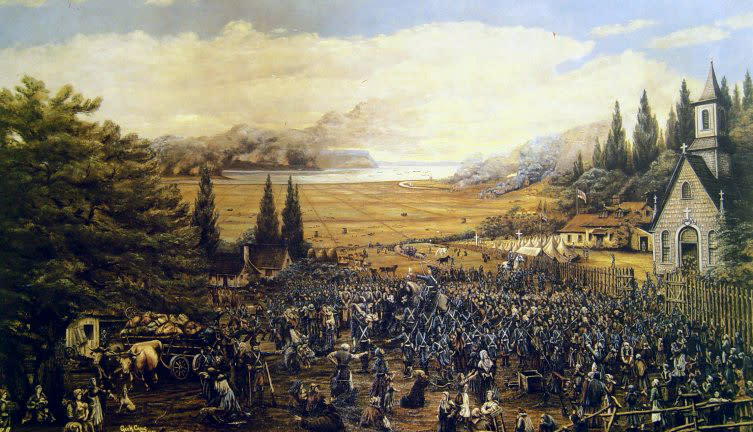
Approximately 18,000 French-speaking Catholic inhabitants settled Acadie (now Nova Scotia) in 1605 and lived there under French rule until 1713 when the region went into English hands. Acadians refused to pledge allegiance to the British crown and Anglican Church. English Governor Charles Lawrence gave the orders that led to the expulsion of the Acadians in 1755, also known as "Le Grand Derangement."
1765-1784 – The Great Immigration
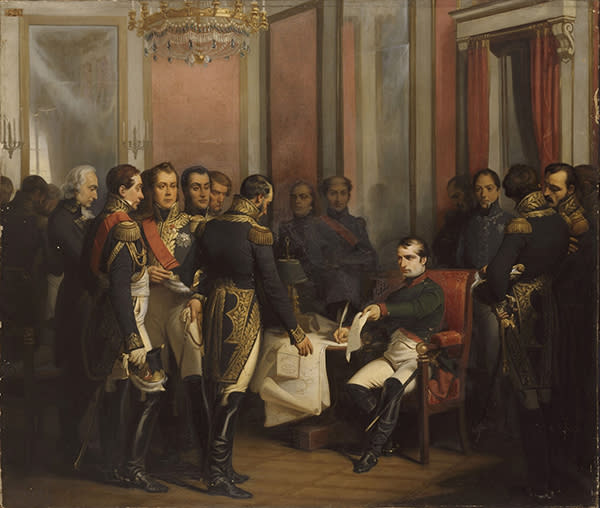
Artist: Gaetano Ferri (1822–1896) completed work started by François Bouchot (1800–1842).
As a result of the Treaty of Fontainebleau in 1762, Louisiana went from French to Spanish rule. The Spanish actually took possession in 1766. The French Revolution of 1789 had its effect on the area as many French Loyalists fled to Louisiana to settle. With the Louisiana Purchase of 1803, Louisiana then became the possession of the United States.
1784 – Settlement
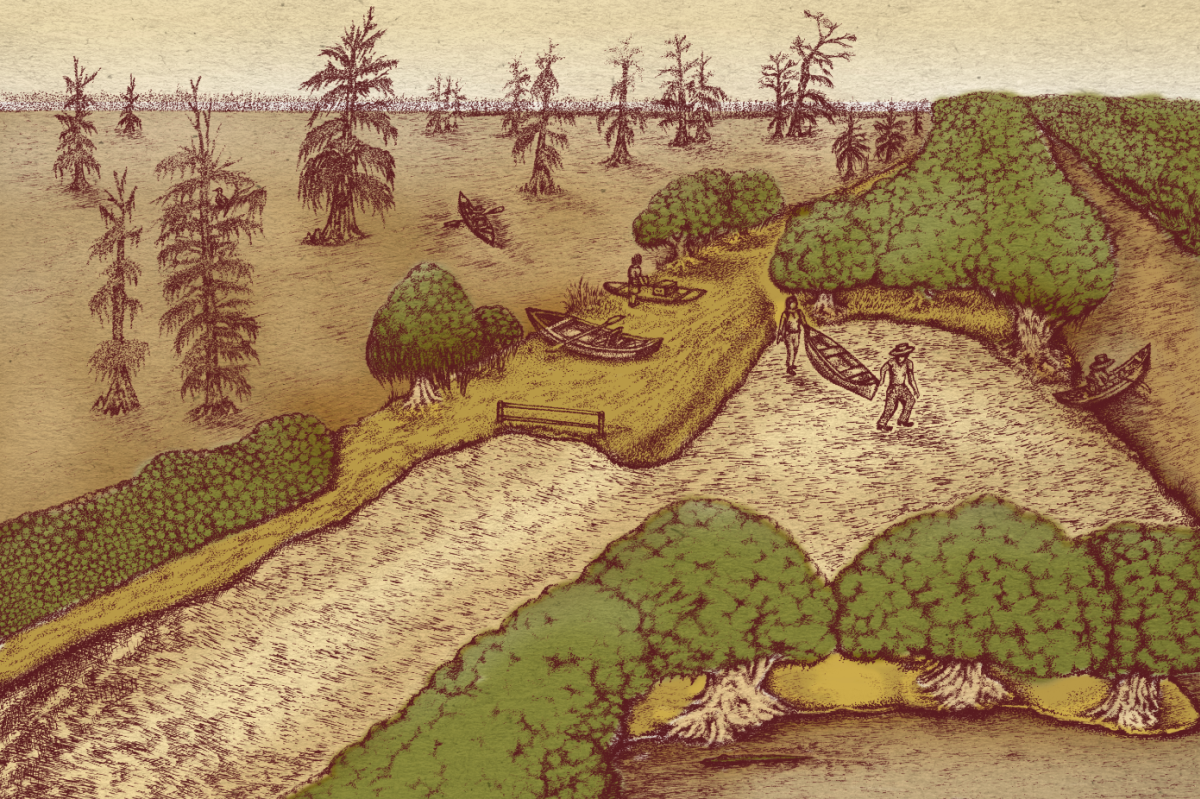
The King of Spain consented to allow the Acadians to settle in South Louisiana joining a scattering of their people who arrived as early as 1765 from the Caribbean and the East Coast. Some settled on the Eastern Seaboard of the U.S., but most ended up in New Orleans where they were met with hostility from the French aristocracy, so they headed west. They settled along the bayous of south-central and southwestern Louisiana where they could live according to their own beliefs and customs.
1820s — Vermilionville

Before European and Canadian settlers occupied what would become Lafayette Parish, the indigenous Atakapa-Ishak, Choctaw, Chitimacha, and Opelousa inhabited the area. By the mid-18th century, French, Spanish, and Acadian colonists established settlements along the Vermilion River, surrounding bayous, and a long-established Native trading outpost called “Pinsahuk,” or Pinhook. In the early 1820s, Jean Mouton, the son of an exiled Acadian, and his surveyor, John Dinsmore, Jr., laid out a cross-grid town, with streets named for presidents, that they named St. Jean du Vermilionville. The name would eventually be shortened to Vermilionville.
1884 — Lafayette Name Change
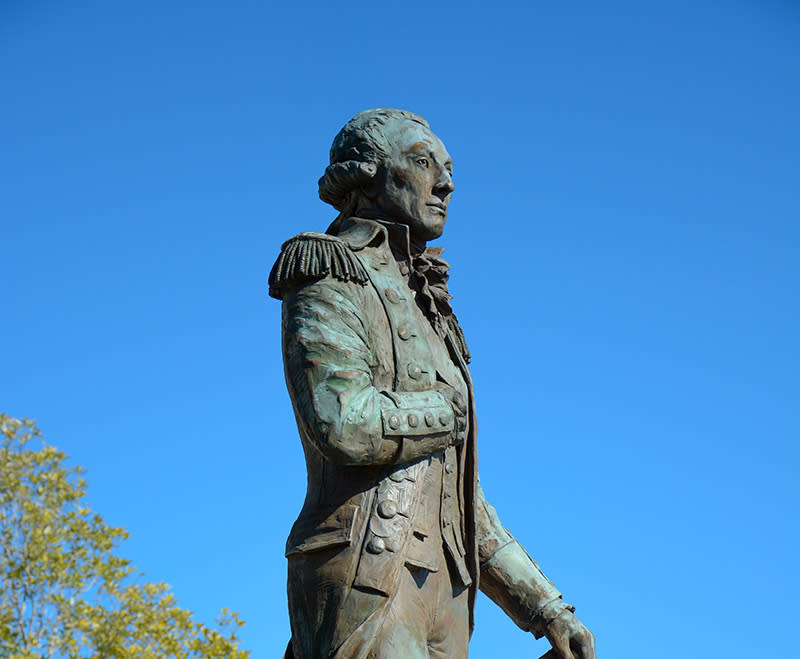
In 1823, the Louisiana legislature carved off the western half of St. Martin Parish to form a new parish, named after the Marquis de Lafayette, hero of the American and French Revolutions, who would soon undertake a grand tour of the United States at the bequest of President James Monroe. A legislative charter of 1869 was amended to rename the town of Vermilionville to Lafayette. Problem was, there was another town, a suburb of New Orleans, also called Lafayette. In 1884, however, New Orleans incorporated the other Lafayette into its boundaries, allowing the Acadian-area of Lafayette to finally switch names. By then, Lafayette was truly the hub city of Acadiana, with a railroad stop, stable population and business corridor.
1901 — Southwestern Louisiana Industrial Institute Opens

UL— Student Union ©University of Louisiana at Lafayette
A public research university with over 18,000 students, the roots of the University of Louisiana at Lafayette stretch back to 1898 when the state legislature passed an act for the creation of a school in southwest Louisiana. The Southwestern Louisiana Industrial Institute (SLII) opened in 1901 with 100 students attending classes. Twenty years later, the school, renamed the Southwestern Louisiana Institute of Liberal and Technical Learning (SLI), became a bachelor’s degree-granting college. The school’s name was changed yet again in 1960 to the University of Southwestern Louisiana (USL), which had then grown to include a graduate school and six distinct colleges. In 1999, the institution changed its name, likely for the final time, to the University of Louisiana at Lafayette (ULL). Today, the university is home to the Center for Louisiana Studies, founded in 1973; 120 undergraduate, graduate, and doctoral programs; and the men’s and women’s Ragin’ Cajun athletic teams.
1953 — Oil Center Opens
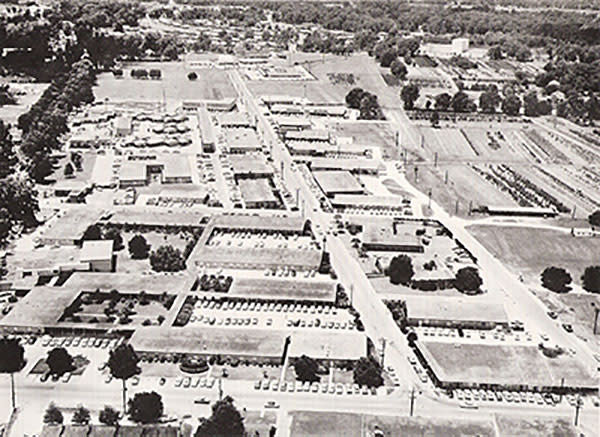
The Oil Center (Aerial) ©LAGCOE.
Originally built as a headquarters for numerous oil companies, the Heymann Oil Center remains a sort of city within a city in central Lafayette. Maurice Heymann, a department store mogul, real estate developer, and philanthropist originally from New Orleans, opened his eponymous Center to capitalize on Texas and Lake Charles-area oil companies then relocating their production to the Gulf Coast. The Oil Center also included the Petroleum Club, once a private dining space for oil executives, but open to the public since 1986. Heymann continued to invest in the area adjoining the Center. The Heymann Performing Arts Center opened 1960, and Lafayette General Hospital five years later. Today, the oil city remains a close-knit community of offices, restaurants, and shops.
1968 — Creation of CODOFIL
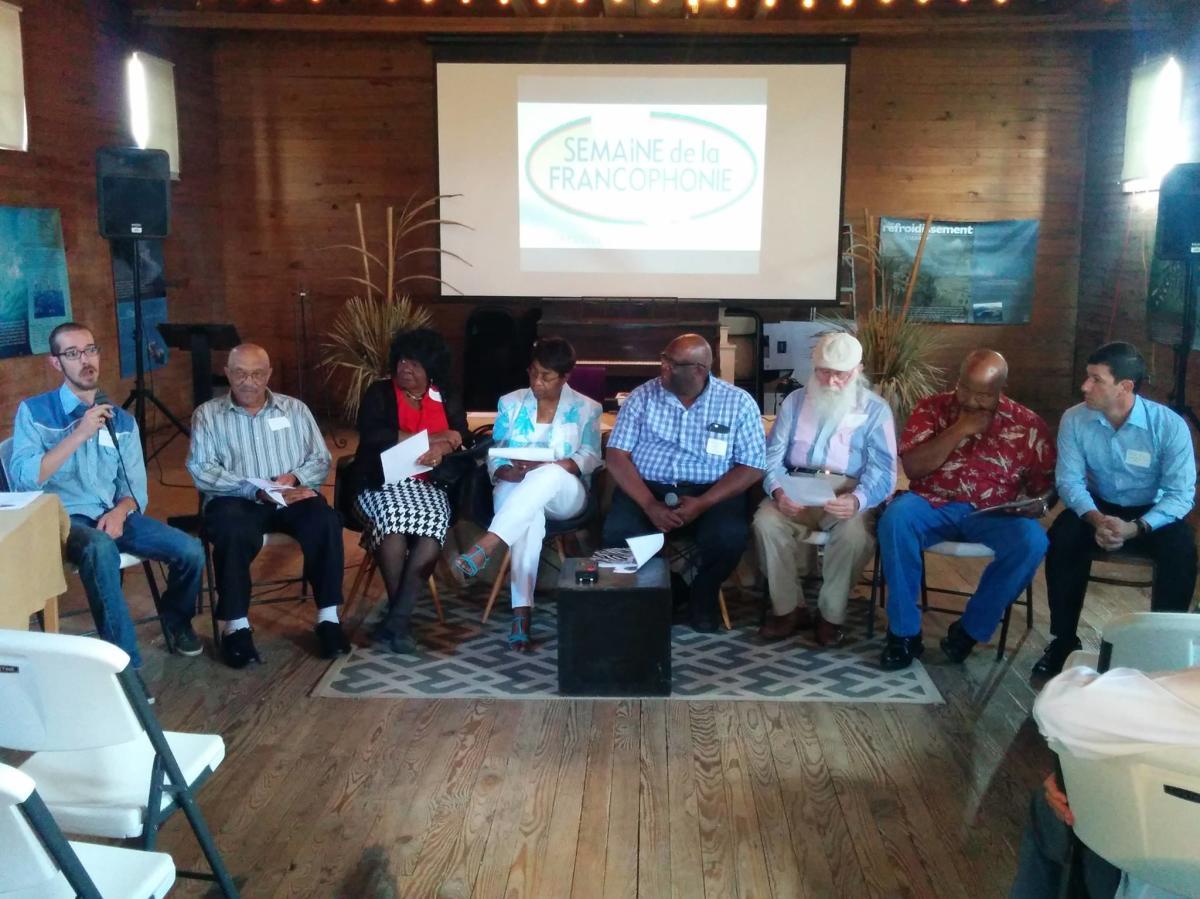
Created in 1968 by the Louisiana state legislature, and headquartered in Lafayette, the Council for the Development of French in Louisiana (CODOFIL), according to its charter, works to “do any and all things necessary to accomplish the development, utilization, and preservation of the French language as found in Louisiana for the cultural, economic and touristic benefit of the state.” Spearheaded by James R. Domengeaux, a Lafayette-born, former US Congressman, Cajun, and cultural activist, CODOFIL reintroduced French language education to Acadiana classrooms, where students were once often punished for speaking the language they used at home. Domengeaux worked to recruit teachers from Francophone countries and embraced French language immersion instruction at home and abroad. After a half-century, CODOFIL continues to defend the teaching and speaking of French language throughout Louisiana.
1977 — The Inaugural Festivals Acadiens et Créoles

Marc Savoy plays the inaugural Festival Acadien in Blackham Coliseum ©Philip Gould.
The world’s oldest and largest Cajun and Zydeco music festival, Festivals Acadiens et Créoles is held every October. The Festival’s roots stretch back to 1976, when a trio of Cajun musicians, Gladius Thibodeaux, Louis “Vinesse” LeJeune, and Dewey Balfa, represented Louisiana at the 1964 Newport Folk Festival. Balfa promised to “bring home the echo of the standing ovation” they received. A decade later, under the auspices of CODOFIL, Balfa helped organize the Tribute to Cajun Music Festival in 1974. The Tribute concert eventually merged with two other independent festivals, the Louisiana Native and Contemporary Crafts Festival and the Bayou Food Festival, to create what would eventually come to be called the Festivals Acadiens et Créoles. Spread across a three-day weekend in Lafayette’s Girard Park, the free festival grounds feature a crafts fair, food tents, chef demos, and six stages of local music.
1983 — Downtown Lafayette Revitalized

In 1983, a pair of organizations dedicated to the revitalization and preservation of the city’s downtown district was launched. That same year, Downtown Lafayette Unlimited, a private nonprofit, along with the aid of the Downtown Development Authority, a city-run agency, helped launch Downtown Alive, now Louisiana’s oldest continuously running free outdoor concert series. By decade’s end, a series of commissioned public art projects, most notably a sequence of instantly beloved murals by Robert Dafford (“Escape from the Postcards,” “Ex-Garage,” and “Gateway,” among others), beautified the exteriors of several downtown buildings. In 1992, the Lafayette Natural History Museum and Planetarium, now known as the Lafayette Science Museum, relocated from Girard Park to the former Heymann’s Department Store. Three years later, a two-phase streetscape project improved the sidewalks on Jefferson and Vermilion streets, planted cypress trees, and created and/or renovated several permanent public parks, including Parc Sans Souci, Parc International, Parc Putnam, and Parc de Lafayette, which are all venues for festivals and concerts.
1985 — The Cajundome Opens

The Cajundome is a 13,500-seat arena, convention center, and much-beloved symbol of the Lafayette skyline. Designed by lifelong Lafayette resident and architect Neil Nehrbass, the Cajundome opened in 1985, after three-plus years of construction, at a cost of $64 million. On November 11, Country music legend Kenny Rogers inaugurated the Dome. Hundreds of national and international acts, including Stevie Wonder, Billy Joel, Cher, and Justin Bieber, have since played here. Since its opening, the Ragin’ Cajuns men’s and women’s basketball teams of USL, now ULL, have called the Dome home. The Dome has hosted other local sports franchises, including, most notably, the Louisiana IceGators minor league hockey team, who skated on the arena’s “frozen swamp” ice rink from 1995 to 2005. In 2002, the Dome was enlarged to include an over 37,000-square-foot convention center addition.
1987 — The First Festival International de Louisiane
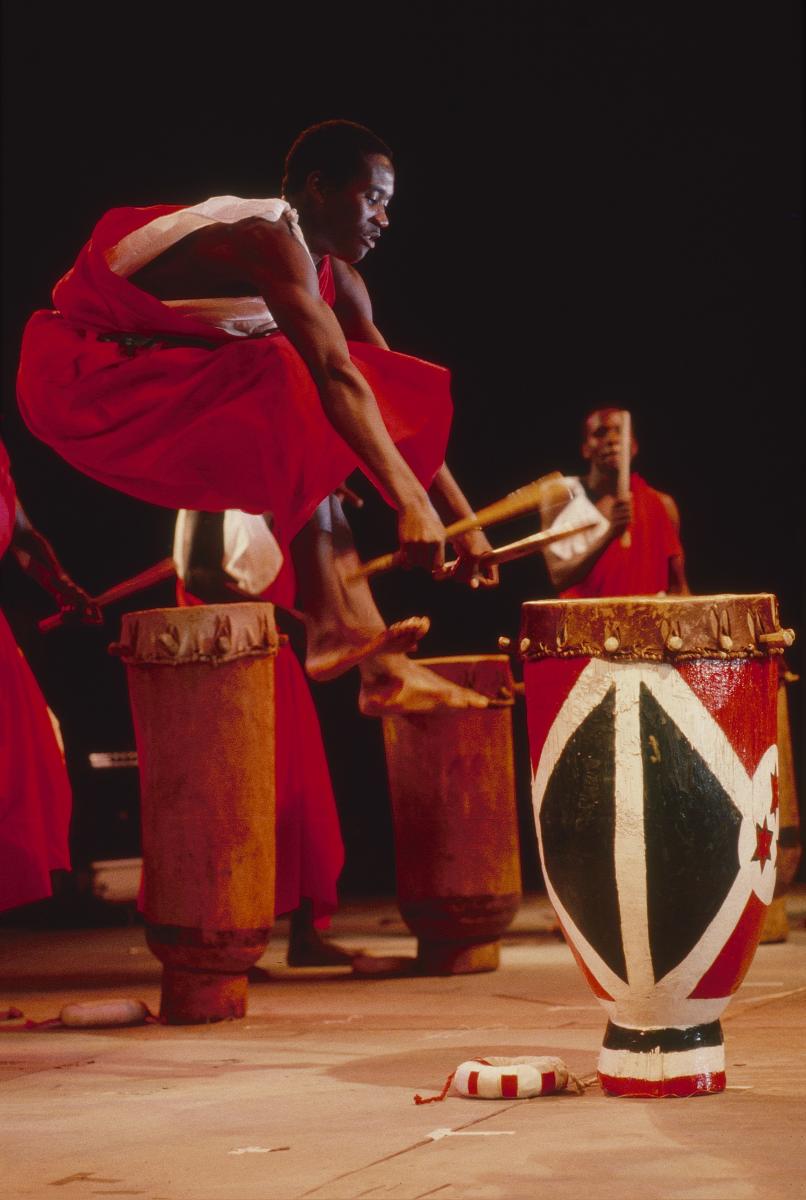
Burundi Drummers—Festival International. 1989.© Philip Gould
A global-themed, annual music, arts, and food event, Festival International de Louisiane is the largest international music and arts festival in the United States. Conceived in 1985 to revitalize the city’s moribund downtown corridor, following the oil industry crash earlier in the decade, Festival International has, from the beginning, recognized and celebrated Lafayette’s cultural and historical diversity. Modeled after the Festival d’ete International du Québec in Québec City, the premiere Festival International, held in July 1987, featured acts from throughout the greater Francophone world, including the Rwanda Master Drummers and the Assemblée du Pays Normand from France. The following year, festival organizers moved the event to late April, taking advantage of the milder spring weather. Since then, Festival International has hosted bands from around the world, while placing local musicians in an international context. Today, the five-day festival, spread over downtown-area seven stages, draws upwards of 400,000 attendees. Staffed by 2,700 volunteers, Festival International remains free and open to the public.
1999 — River Ranch Opens
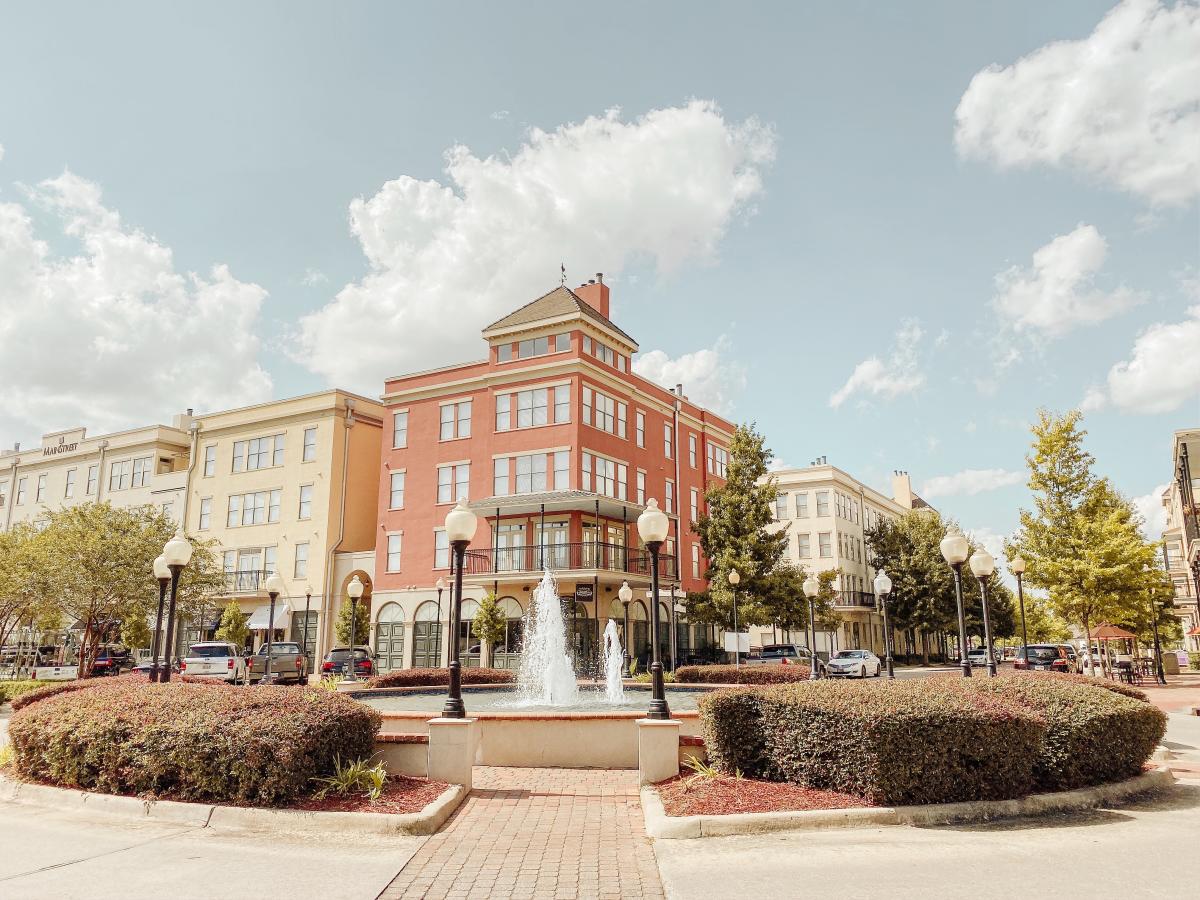
A contemporary, mixed development of homes, apartments and condominiums, business offices, and retail shops that opened in 1999, the Village of River Ranch helped revitalize Lafayette’s south side. Occupying over 300 acres of former horse and cattle farmland, once nicknamed “the ranch,” the community is home to over 2,500 people and dozens of local and national businesses. An exemplar of the New Urbanism design movement, River Ranch features a centrally located town square, surrounded by walkable streets and sidewalks, dotted with green spaces and lakes, and filled with houses designed in seven major architectural styles. During the cooler months, River Ranch hosts Saturday morning races and its Rhythms on the River concert series on Thursday evenings.
2004 — The Acadiana Center for the Arts Premiers
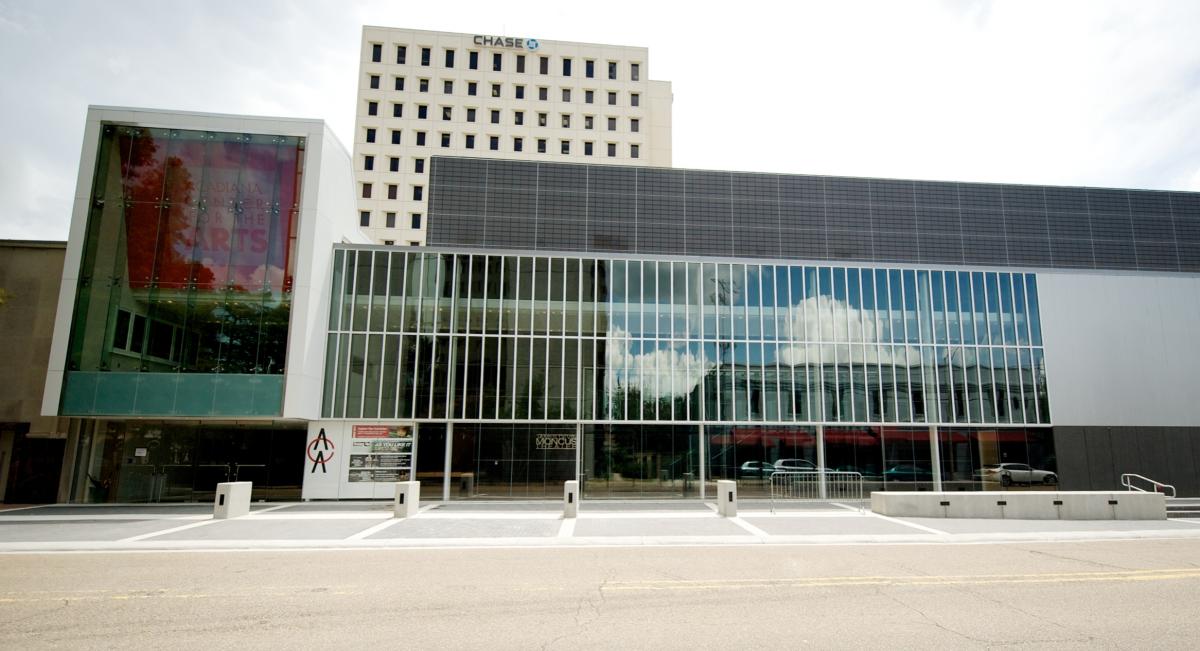
A nonprofit organization functioning as the central cultural hub of eight Acadiana parishes — Acadia, Evangeline, Iberia, Lafayette, St. Landry, St. Martin, St. Mary, and Vermilion — the Acadiana Center for the Arts (AcA) is the region’s premier venue for arts entertainment and education. Originally established as an arts council in 1975, the AcA has transformed into a 10,000-square-foot gallery and theater space in the heart of downtown Lafayette. Visual arts programming includes twenty-five exhibitions annually. The 300-seat James Devin Moncus Theater hosts musical, theatrical, and dance performances from a diverse range of local, national, and global acts.
In the late 1700s, South Louisiana was a melting pot of cultures where families, friends, travelers, and neighbors gathered around the table at mealtime. Cajun culture today still revolves around food, family, and joie de vivre—a joy of life. Many of the area’s most popular restaurants have been around for decades because of their warm hospitality and feel-good food. Check out these 10 restaurants that have stood the test of time.
Keller’s (1895)

A descendant of France, Victor Keller opened the original Keller’s Bakery in 1895 in Abbeville, just south of Lafayette. His grandson later opened a downtown Lafayette bakery in 1929, where it still stands today. While Keller’s bakes delicious cookies, petit fours, cakes, pies, and brownies are best known for their delectable king cakes made during Mardi Gras.
Poor Boy's Riverside Inn (1932)

In the 1930s, Hulo “Poor Boy” Landry started a snowball stand after discovering he had a flour allergy and could no longer work for the family enterprise - Evangeline Made Bread. He would take his lunch breaks in between serving customers who quickly took notice of his poor boy sandwich he learned to make in slave quarters in New Orleans and from his coworkers at The Roosevelt Hotel. After repeated requests to buy his lunch, satisfied customers encouraged him to open a restaurant when they realized how delicious his poor boys were. Hence an iconic restaurant and nickname were born.
Don’s Seafood (1934)
This Louisiana landmark has been serving Cajun food since 1934. Here you’ll find traditional Cajun dishes made with local seafood, rice, and crawfish along with the Holy Trinity—bell peppers, onion, and celery. Favorites include chicken and sausage gumbo, Jacked Up Oysters, and generous seafood platters. Feeling adventurous? Try the blackened alligator! Note: The Original Don's Downtown closed.
Borden’s (1940)
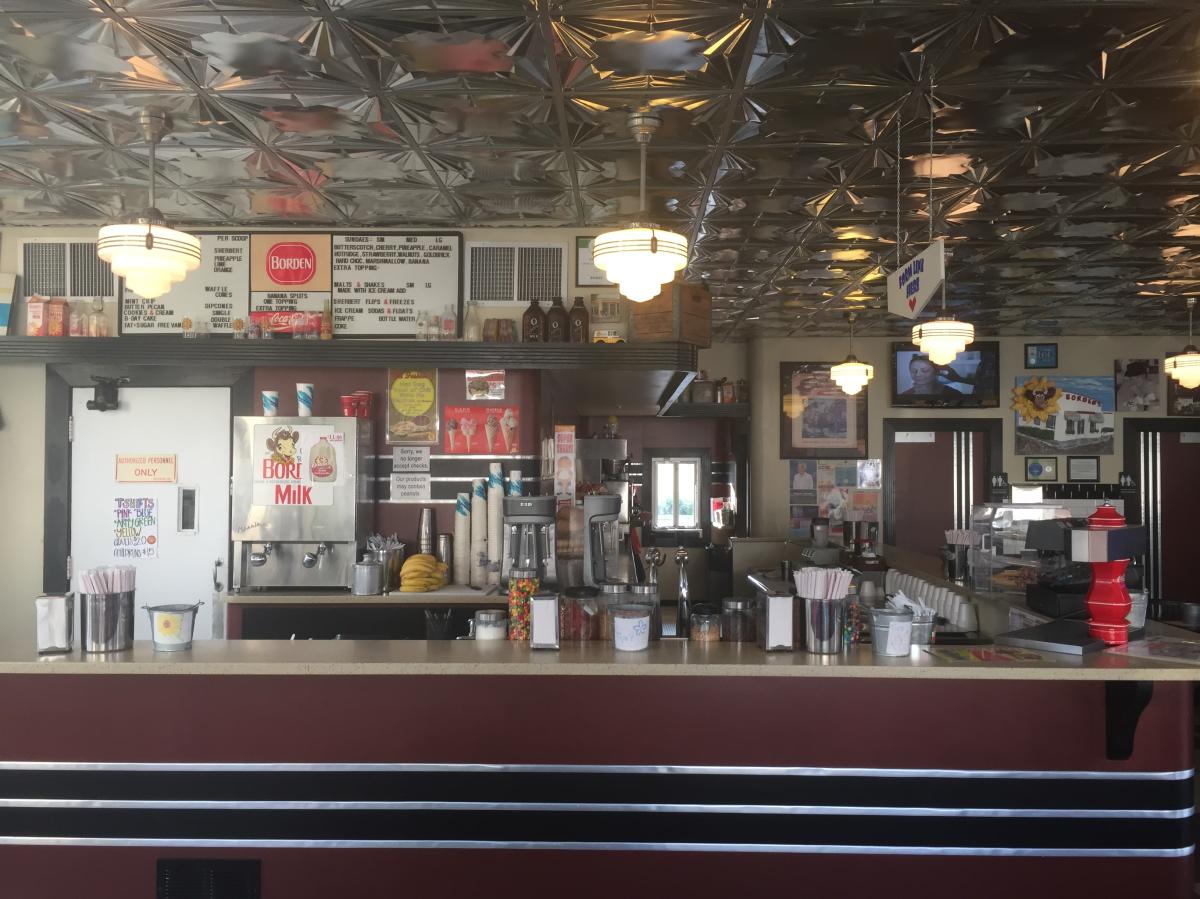
Lafayette is home to the last Borden’s Ice Cream Shoppe in the country. The ice cream parlor opened in 1940 on Johnston Street in downtown Lafayette and remains a popular hangout today for the young and old. Soak in the nostalgia as you indulge in classics like sundaes, banana splits, and homespun milkshakes. You can even bring your dog for a special puppy treat!
Judice Inn (1947)
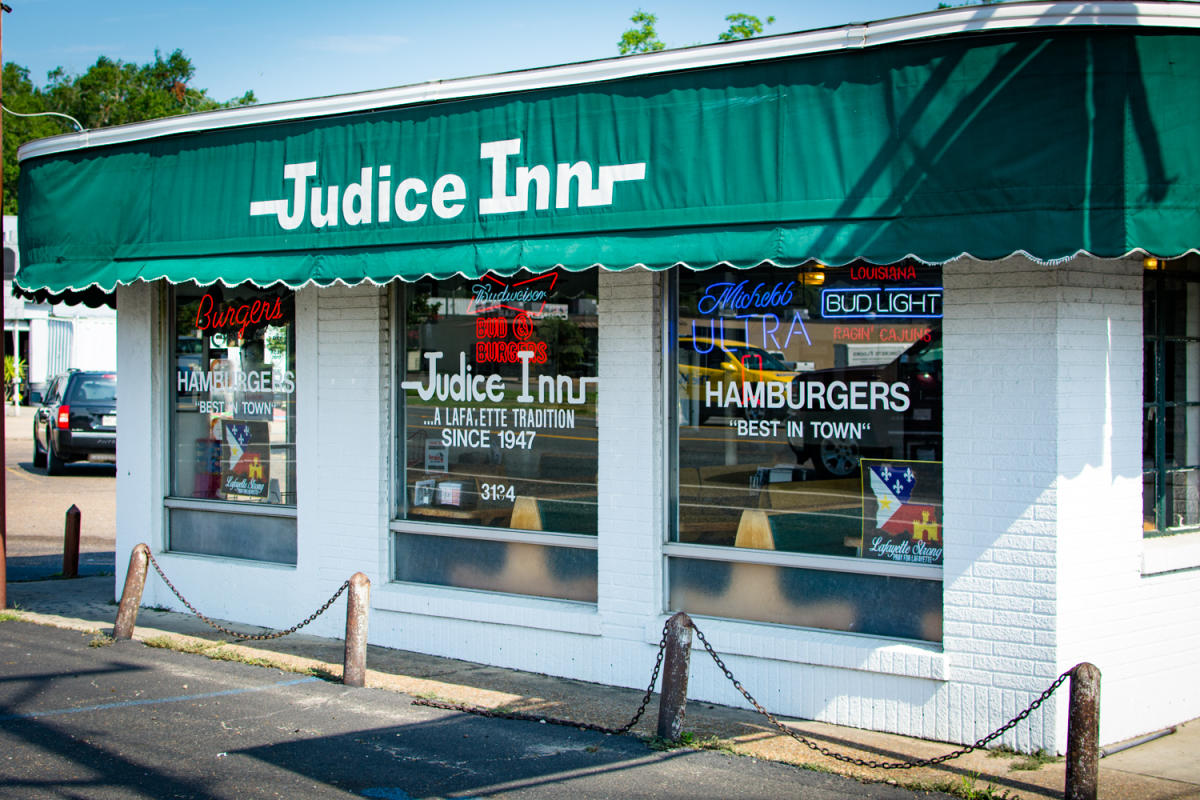
Brothers Alcide and Marc Judice opened this burger joint after coming home from WWII. The diner was once on the outskirts of town, but the city has grown and developed, making Judice Inn right in the center. While the city may have changed, Judice Inn still serves some of the best burgers and milkshakes around. The restaurant is now operated by Gerald Judice, the youngest of Marc’s sons.
La Fonda (1957)

This Tex-Mex restaurant is the locals’ place to see and be seen. There are even caricatures of long-time customers adorning the wall. On the menu, you’ll find classics like enchiladas, burritos, and tacos along with great steaks and fried rabbit (try it with queso!). The margaritas are delicious, too—be sure to ask for a dollop of their signature sangria on top.
Alesi (1957)

Mariano “Mike” Alesi, along with his wife Bertha, brought the first Italian pizza house to Lafayette in 1957. This family-friendly restaurant serves all the favorites, including pizza, spaghetti, lasagna, and chicken parm. Look for their iconic neon sign on Johnston Street.
Ton's Drive In (1963)
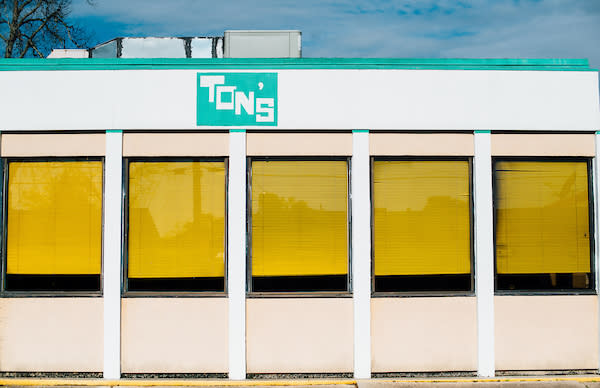
Ton’s Drive In opened in May of 1963. It was a real drive-in back then, with carhops that paraded out trays of hot dogs, chili, fried chicken, and hamburgers to cars full of customers. When Broussard started to grow Ton’s relocated across the street, added plate lunches to the menu got rid of the drive-in and added the town’s first drive-thru. Now Juanita and her daughter, Hollie, operate the restaurant along with the help of community employees.
Dwyer’s (1965)
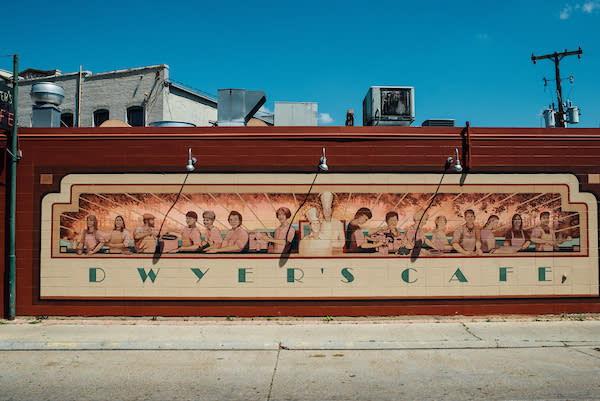
Trained to cook in FDR’s Civilian Conservation Corps, Stanley Dwyer opened this downtown diner in 1965. Today, it’s a go-to place for comfort food and plate lunches. You’ll find everything from hardy breakfasts to filling lunches of smothered steak, catfish courtbouillon, meatball stew, and fried chicken. Be sure to check out the stained-glass window inside and the fabulous mural on Garfield Street.
Poupart’s (1967)
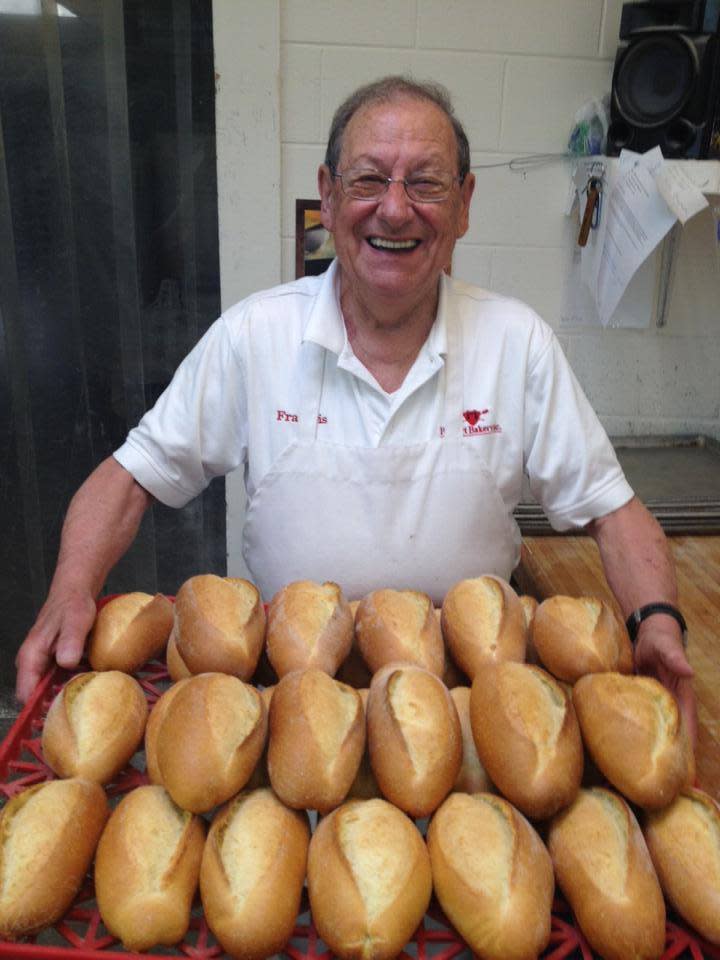
Step inside, and you’ll be transported to a French countryside bakery. For more than 40 years, the Poupart family has been making the finest French pastries, Old World bread, sweet treats, and savory soups and sandwiches. Dine-in, order out, or even ship king cake to your friends and family back home.
Laura’s 2 (1968)
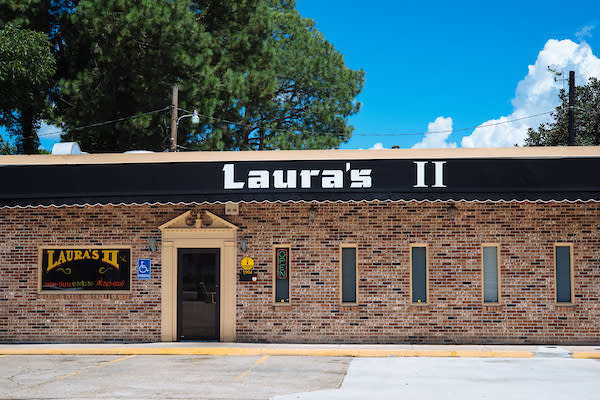
Laura Broussard started serving plate lunches from her Lafayette home in 1968. Today, her granddaughter Madonna continues her legacy with dishes like spicy baked turkey wings, crispy pork chops, and incredible rice and gravy. The legendary Anthony Bourdain even dined here on his last trip to Cajun Country in 2018.
Lafayette Parish is home to 37 sites on the National Register of Historic Places
Acadiana has a long and profound history. The area was founded in 1755 from French-Canadian exiles seeking religious and cultural freedom. At the time, South Louisiana was Spanish Territory. The Spanish Trail ran right through present-day Lafayette, bringing together Native Americans with European settlers for trade. As a result, the area became a real melting pot.
Many significant landmarks around Lafayette remain today. Their unique styles are a testament to the area’s cultural diversity. More than three dozen buildings in Lafayette Parish are on the National Register of Historic Places.
Here are a few highlights to visit on your next trip:
Alexandre Mouton House
1122 Lafayette St., Lafayette

This Greek-Revival home was built in 1820 by Jean Mouton, who later founded the city of Lafayette in 1821. His son Alexandre married in 1826 and added on to the home where he lived until 1836. Alexandre became a US Senator in 1837 and the Governor of Louisiana in 1843. Today, the house serves as the Lafayette Museum.
Charles Mouton Plantation
338 N. Sterling St., Lafayette

Another son of Jean Mouton, Charles Mouton, lived on a property adjacent to his father’s plantation, just a mile outside of town. The Acadian-style raised cottage was built in 1820. Today, the home serves as a bed and breakfast furnished with period pieces. It’s also part of the Sterling Grove Historic District.
The Cathedral of Saint John the Evangelist
914 St. John St., Lafayette

St. John’s Cathedral was the third church built on this downtown site, donated by Jean Mouton in 1821. The present Dutch-Romanesque landmark was completed in 1916 and is truly awe-inspiring. The cathedral boasts 50-foot ceilings and an altar hand-carved by Italian artisans. Other sites of interest are a historic raised cemetery and a centuries-old oak tree. Public tours are available.
Cafe Vermilionville
1304 Pinhook Road
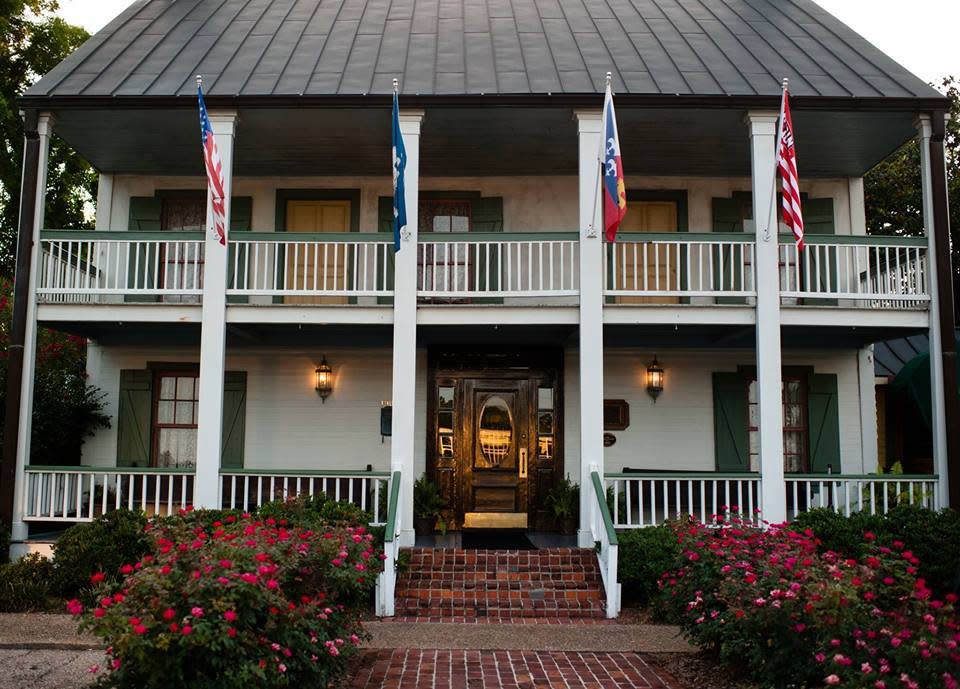
This fine-dining restaurant is located inside the city’s first inn. Nobody is quite sure who built the inn, but records indicate it dates back to 1825. During the Civil War, federal soldiers occupied the inn. Bullets and a cannonball were discovered on the property. While it’s been renovated, the two-story building with its double porches still retains its Anglo-American and French influences, including cypress wood and bousillage—a mixture of clay and cured Spanish moss—in the walls.
First United Methodist Church
703 Lee Ave., Lafayette

Built in 1924, this downtown church features a five-bay front facade, prominent portico, and four columns. The style is a classic Colonial-Revival. The church remains active today.
Comeaux House
101 E. Main Street

This Queen Anne home now houses the upscale Nash’s restaurant where they serve fine Italian food with Creole influences. The Comeaux House was built in 1910 by the daughter of the Billeaud family, the founders of the town’s prominent sugar mill. The home is in the Main Street Historic District, featuring a beautiful collection of several Queen Anne style buildings.
Ducrest Building
100 W. Main St., Broussard
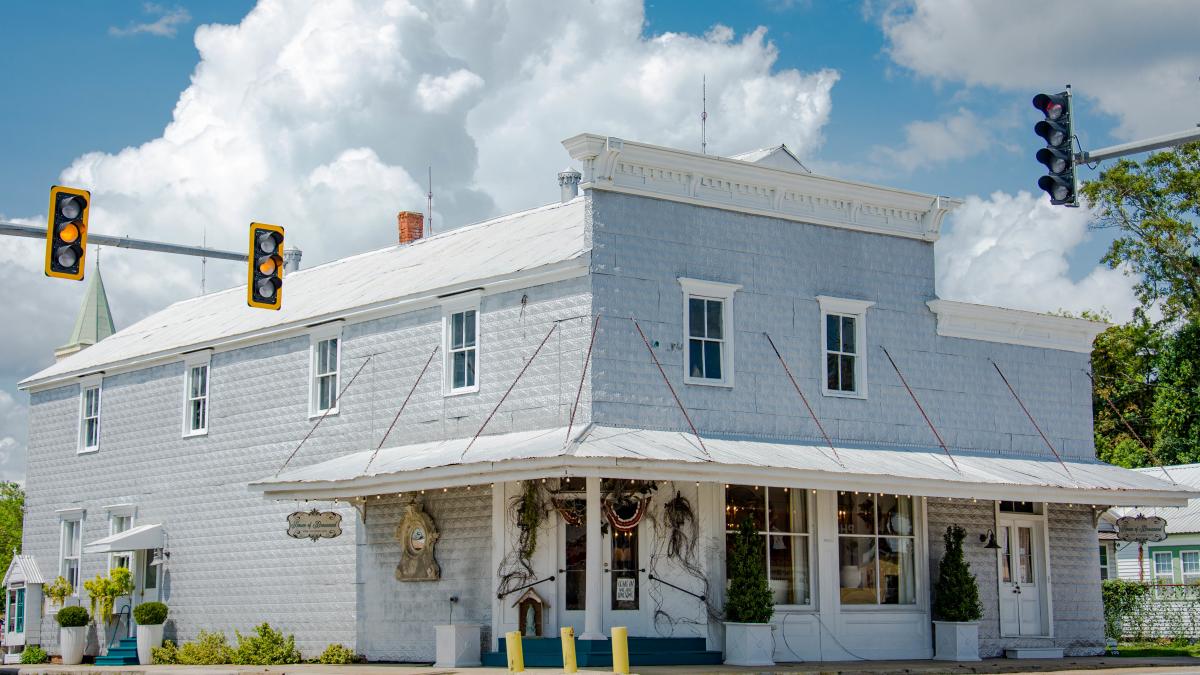
Once the pharmacy and the post office, the 100-year-old building now houses an upscale boutique and interior design shop, The House of Broussard.
Valsin Broussard House
408 W. Main St., Broussard
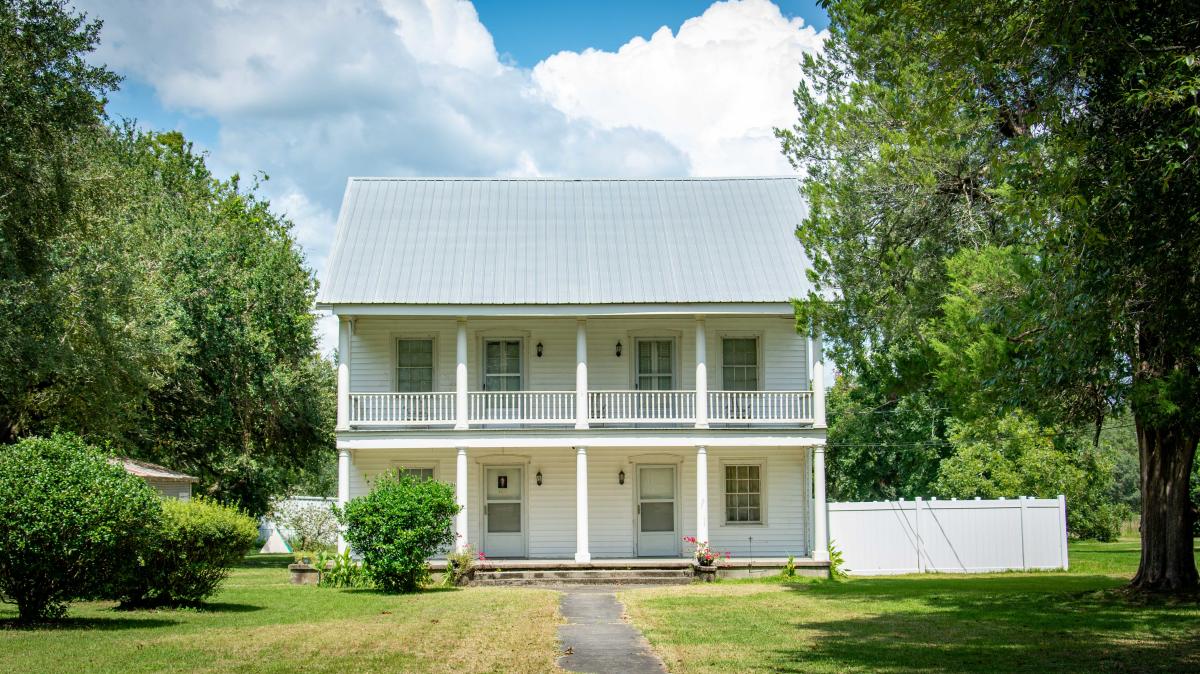
The oldest remaining residence in Broussard was fittingly built by its town’s founder Valsin Broussard. The Creole-style two-story home was built in 1876. It is privately owned today.
Esprit de Coeur
402 Garfield St., Lafayette
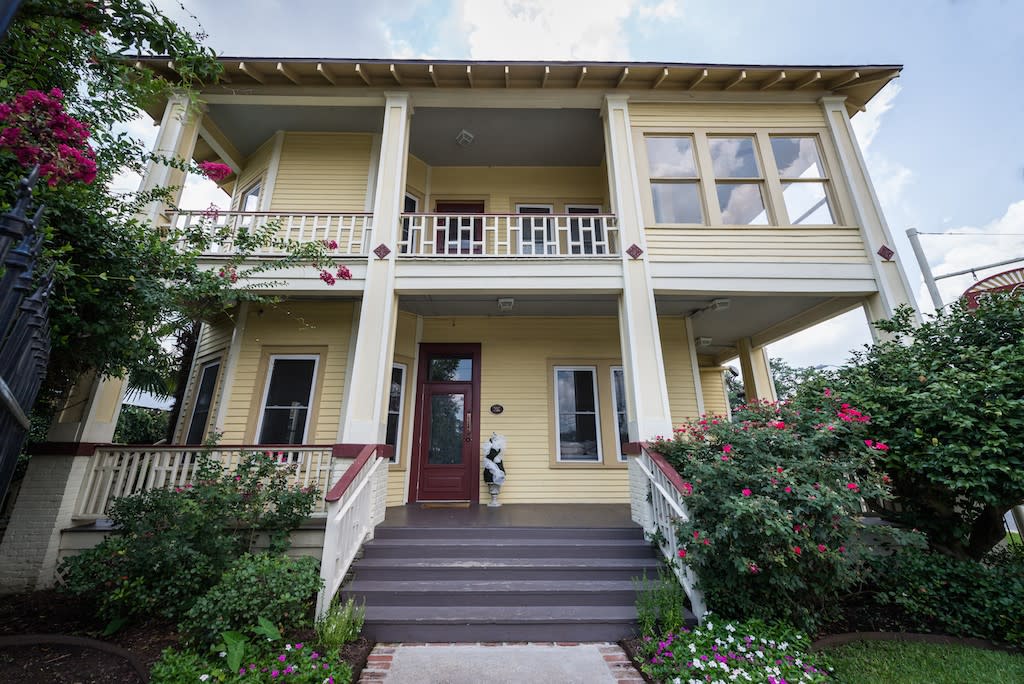
The original owner of this house, bought the property from Alexandre Mouton, son of Jean Mouton, the founder of Lafayette, out of the original Vermilionville layout. That first sale took place in February 1883 – one year before Vermilionville was officially renamed Lafayette. It is believed that Mr. Revillon built the structure sometime shortly after the land purchase. The small lot size and proximity to Downtown Lafayette led construction to be of a more moderate and less ornate post-Victorian style structure.
Other Historic Sites Around Town:
- Alesia, 108 N. Morgan St., Broussard, Queen Anne, Stick/Eastlake, 1900-1924
- St. Cecilia School, 302 W. Main St., Broussard, Italianate, 1900-1924
- Janin Store, 121 N. Morgan St., Broussard, Italianate, 1875-1899
- Martial Billeaud, Jr., 118 N. Morgan St., Broussard, Queen Anne/Second Empire, 1875-1899
- Billeaud House, 303 W. Main St., Broussard, Colonial Revival, Queen Anne, 1900-1924
- Roy-LeBlanc House, 105 St. Pierre St., Broussard, Italianate, 1875-1899
- Our Lady of the Assumption School, 410 Michaud St., Carencro, 1925-1949
- Brandt House, 614 Madison St., Italianate, 1875-1899
- Elrose, 217 W. University Ave., Queen Anne, 1900-1924
- Evangeline Hotel, 302 Jefferson St., Renaissance, 1925-1949
- St. Julien House, 203 E. Second St., Queen Anne, 1900-1924
- Daigle House, 1022 S. Washington St., Greek Revival,1875-1899
- Salles House and Office, 512 and 514 S. Buchanan St., Italianate, 1875-1899
- Roy, J. Arthur House, 1204 Johnston St., Queen Anne, Stick/Eastlake; 1900-1924
- Old Lafayette City Hall, 217 W. Main St., 1875-1899
- Old Guaranty Bank Building, 500 Jefferson St., Colonial Revival, 1900-1924
- Sidney Martin House, 310 Sidney Martin Road, 1825-1849
- Alexandre Latiolais House, 900 E. Butcher Switch Road, 1750-1799
- Lafayette Hardware Store, 121 W. Vermilion St., Italianate, 1875-1899
- Lafayette Elementary School, 1301 W. University Ave., Late Gothic Revival, 1925-1949
- Hope Lodge, 116 E. Vermilion St., 1900-1924
- Holy Rosary Institute, 421 Carmel Ave., 1900-1924
- Gordon Hotel, 108-110 E. Vermilion St., Renaissance, 1900-1924
- Dupleix House,106 Lafayette St., Youngsville, Queen Anne, Colonial Revival, 1900-1924, 1875-1899